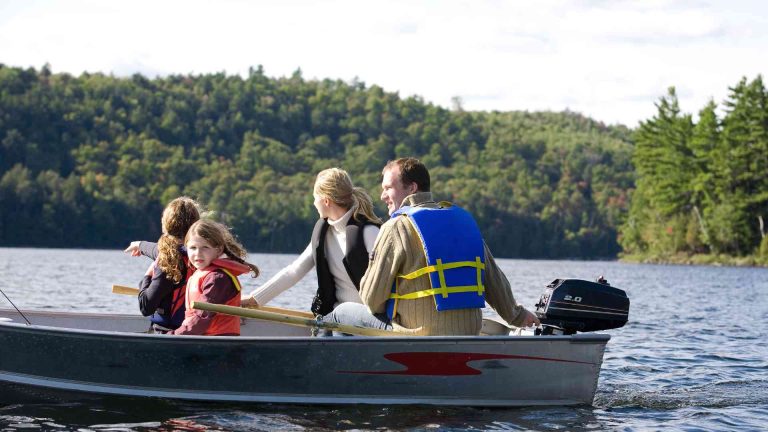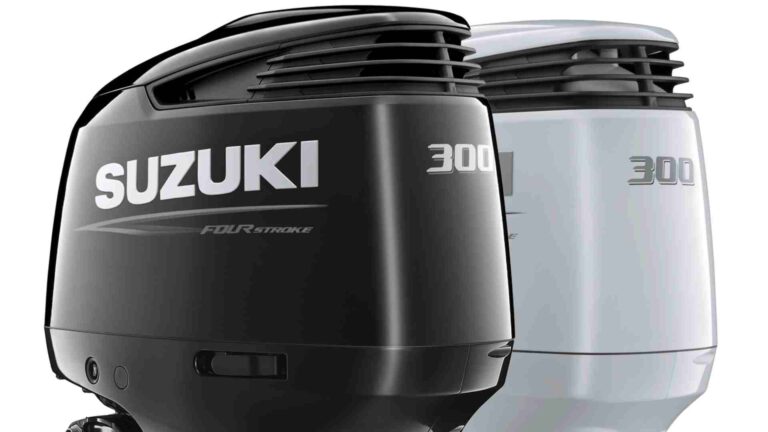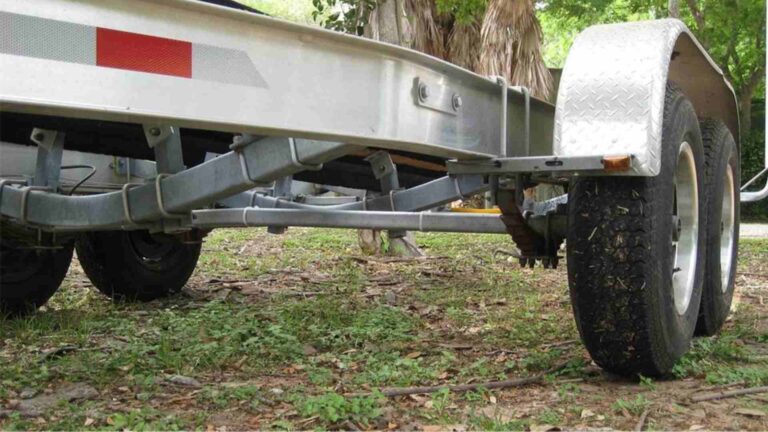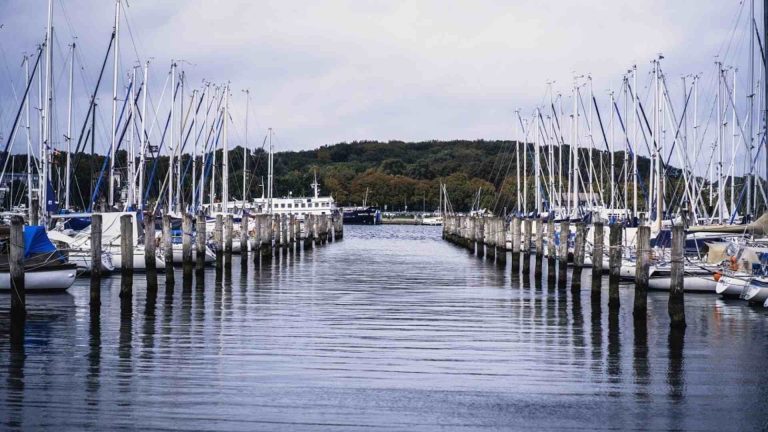Boating at Night: Tips for Safe Navigation After Dark
Boating at night offers a unique and exhilarating experience, with the serene beauty of moonlit waters and the tranquility of the open sea. Whether you’re night fishing, enjoying a romantic cruise, or returning from a late dinner, navigating after dark presents distinct challenges that require careful preparation and vigilance. Reduced visibility, distorted distances, and the need for precise navigation make nighttime boating inherently riskier than daytime excursions. However, with the right knowledge, equipment, and practices, you can ensure a safe and enjoyable journey under the stars. This comprehensive guide provides detailed tips, essential gear recommendations, and best practices to master safe navigation after dark, optimized for both novice and experienced boaters.
Why Boating at Night Requires Extra Caution
Nighttime boating introduces several unique challenges that demand heightened awareness:
- Reduced Visibility: Darkness obscures obstacles, other vessels, and navigational markers, making it harder to judge distances and identify hazards like debris or crab pots.
- Distorted Perception: Moisture, temperature changes, and reflective water surfaces can create visual distortions, complicating navigation.
- Increased Risk of Collisions: Other boats may be harder to spot, and unlit objects or wildlife can emerge unexpectedly.
- Navigation Challenges: Familiar landmarks may be invisible, and reliance on instruments becomes critical.
Despite these challenges, nighttime boating can be rewarding with proper preparation. The following sections outline essential tips, gear, and strategies to ensure safety and compliance with regulations.
Essential Tips for Safe Nighttime Navigation
1. Slow Down to Maintain Control
Reduced visibility at night necessitates a slower speed to allow ample time to react to obstacles or other vessels. Unless you’re in open water with a full moon and no traffic, avoid running on plane. A safe speed is one that allows you to stop within the range of your vision. For example, if your spotlight illuminates 100 feet ahead, ensure you can stop within that distance. This approach minimizes the risk of collisions with debris, buoys, or other boats that may appear suddenly.
2. Share Lookout Duties
The boat operator is responsible for monitoring gauges, chartplotters, and steering, which can be overwhelming in the dark. Assign a crew member to serve as a dedicated lookout, scanning the horizon and performing periodic 360-degree checks to detect approaching vessels or obstacles. This division of duties enhances situational awareness and reduces the risk of missing critical visual cues.
3. Prepare Thoroughly Before Departure
Preparation is key to safe nighttime boating. Create a pre-departure checklist to ensure all equipment is ready:
- Navigation Lights: Verify that red (port), green (starboard), and white (stern) lights are functioning and meet regulatory brightness requirements.
- Safety Gear: Ensure personal flotation devices (PFDs) are accessible, preferably with attached strobe lights or glow sticks for overboard emergencies.
- Lighting Tools: Check batteries in flashlights and headlamps, and store binoculars near the helm for enhanced visibility.
- Fuel and Charts: Confirm you have enough fuel (1/3 to destination, 1/3 to return, 1/3 reserve) and updated nautical charts.
A well-prepared boat reduces the likelihood of equipment failures that could strand you in the dark.
4. Preserve Night Vision
Human eyes take approximately 20–30 minutes to fully adapt to darkness, and a single flash of bright light can reset this process. To preserve night vision:
- Dim all onboard lights, including courtesy lights, chartplotter backlighting, and cabin lights.
- Use red-filtered flashlights or headlamps, as red light has minimal impact on night vision.
- Limit chartplotter use to brief checks, as even dimmed screens can impair your ability to see outside.
Avoid looking at phone screens or other bright devices, and consider covering reflective surfaces to minimize ambient light.
5. Avoid Headlights and Spotlights
Unlike driving a car, using headlights or spotlights on a boat is generally ineffective due to water’s reflective surface, which scatters light and creates glare. Reserve docking lights or spotlights for close-up tasks, such as identifying cleats or handholds when approaching a dock or another vessel. Overuse of bright lights can also impair other boaters’ night vision, increasing collision risks.
6. Understand Navigation Light Rules
Navigation lights are critical for signaling your boat’s position and direction to others. In North America, follow these guidelines:
- Light Configuration: Red and green sidelights are positioned at the bow (red on port, green on starboard), with a white stern light aft. A masthead light (white) is required for larger vessels.
- Interpreting Lights:
- Red and green visible: The boat is approaching head-on.
- White only: The boat is moving away or ahead of you.
- Red only: A boat is crossing your path from starboard and has the right of way; stop or yield.
- Green only: A boat is crossing from port; you have the right of way but proceed cautiously.
- Channel Navigation: When returning to a harbor, keep red markers to starboard (“Red, Right, Returning”) to stay in safe channels.
Before departure, test all navigation lights to ensure they are visible from the required distance (e.g., 2 nautical miles for sidelights on vessels over 12 meters).
7. Listen Actively
In the absence of clear visual cues, your hearing becomes a vital tool. Turn off the stereo and listen for:
- Fog horns or bells from other vessels or navigational aids.
- Engine noises indicating nearby boats.
- Breaking waves signaling proximity to shore or obstacles.
Active listening can alert you to potential hazards before they become visible, especially in foggy or crowded conditions.
8. Trust Navigation Instruments
Modern chartplotters, GPS, and radar are indispensable for nighttime navigation, as they provide accurate data when your eyes may deceive you. Ensure your chartplotter is updated with the latest charts and that you’re proficient in its use. If your instruments are reliable during the day, trust them at night unless you have evidence of malfunction. However, if you’re unfamiliar with your equipment or suspect inaccuracies, slow down and cross-reference with visual or auditory cues.
Chart: Nighttime Navigation Workflow

9. Bring a Multi-Purpose Towel
A beach towel is a versatile tool for nighttime boating:
- Warmth and Dryness: Drape it over yourself to stay warm in cool, damp conditions.
- Light Reduction: Cover parts of the console to minimize ambient light.
- Windshield Clearing: Use it to wipe fogged windshields for clearer visibility.
Keep a towel within reach for quick access during your journey.
10. Dock with Extra Caution
Docking at night is challenging due to distorted depth perception and limited visibility. Follow these steps:
- Approach the dock at a speed no faster than you’re willing to collide with it (ideally a slow idle).
- Use docking lights sparingly to avoid blinding others.
- Instruct crew to step off calmly rather than jumping, reducing the risk of injury.
- Double-check knots and hitches before leaving the boat unattended.
For detailed docking techniques, refer to resources like the BoatUS Foundation’s docking guides.
Essential Night Boating Gear
Equipping your boat with the right gear enhances safety and compliance with regulations. Below is a table of recommended equipment, including specifications and approximate prices (based on common market rates).
| Equipment | Specifications | Purpose | Approx. Price |
|---|---|---|---|
| Navigation Lights | Red/green sidelights (2 NM visibility), white stern/masthead light (2–3 NM) | Signal position and direction to other vessels | $50–$200 |
| Personal Flotation Devices (PFDs) | USCG-approved, Type I–III, with strobe light or glow stick | Ensure passenger safety in overboard scenarios | $30–$150 each |
| Chartplotter/GPS | High-resolution display, updated charts, waterproof (e.g., Garmin GPSMAP 943xsv) | Provide accurate navigation and hazard detection | $1,000–$3,000 |
| Radar | 24–36 NM range, collision avoidance (e.g., Raymarine Quantum 2) | Detect vessels and obstacles in low visibility | $1,500–$5,000 |
| Red-Filtered Flashlight | LED, adjustable brightness, waterproof (e.g., ACR Firefly Pro) | Preserve night vision while illuminating tasks | $20–$80 |
| Marine VHF Radio | Waterproof, DSC capability, 25W output (e.g., Icom M330G) | Communicate with other vessels and call for help | $150–$400 |
| Emergency Flares | USCG-approved, handheld or aerial (e.g., Orion Coastal Alert/Locate) | Signal distress in emergencies | $30–$100 (pack) |
| EPIRB/PLB | 406 MHz, GPS-enabled (e.g., ACR GlobalFix V5) | Transmit distress signal with location to rescue authorities | $400–$800 |
Note: Prices vary based on brand, features, and retailer. Always purchase USCG-approved equipment from reputable suppliers.
Night Boating Rules and Regulations
Compliance with maritime regulations is non-negotiable for nighttime boating. Key requirements include:
- Navigation Lights: All vessels must display proper lights from sunset to sunrise, as outlined by the U.S. Coast Guard (USCG). For example, powerboats under 12 meters need red/green sidelights and a white stern light visible for at least 2 nautical miles.
- Right-of-Way Rules: These remain consistent day or night. A vessel approaching from starboard has the right of way, and head-on situations require both vessels to alter course to starboard.
- Sound Signals: In restricted visibility (e.g., fog), power-driven vessels must sound one prolonged blast every two minutes when underway or two prolonged blasts when stopped. Ensure your horn or whistle is operational.
Failing to comply can result in fines or increased liability in the event of an accident.
Environmental and Wildlife Considerations
Nighttime boating requires extra caution around nocturnal wildlife, such as marine mammals or seabirds, which may be harder to spot. To minimize environmental impact:
- Avoid high speeds in areas with known wildlife activity.
- Watch for sudden movements in the water, which may indicate animals surfacing.
- Use radar to detect larger marine life at a distance.
Respecting the environment ensures the safety of both wildlife and your vessel.
Common Mistakes to Avoid
Novice nighttime boaters often make the following errors:
- Over-Reliance on Technology: While chartplotters and radar are invaluable, they can fail or provide outdated data. Cross-reference with traditional navigation techniques, such as reading buoy lights or using paper charts.
- Ignoring Weather Changes: Nighttime weather can shift rapidly. Check forecasts before departure and monitor conditions via marine radio or weather apps.
- Speeding in Crowded Areas: Post-event scenarios, like fireworks displays, often lead to congested waters. Maintain a slow speed to avoid collisions.
- Alcohol Consumption: Alcohol impairs judgment and reaction times, which are already compromised in low-light conditions. Stay sober to ensure clear decision-making.
Real-World Scenarios: Learning from Incidents
Nighttime boating accidents often stem from preventable errors. For example, a tragic incident involved a boat colliding with a tow line between a tug and its barge because the operator misinterpreted the tug’s lighting configuration. This underscores the importance of understanding navigation light meanings and maintaining a vigilant lookout. Similarly, post-event congestion after lakeside concerts or fireworks displays frequently leads to collisions when boaters rush to depart without functioning lights or proper speed control. Pre-planning, such as testing lights and plotting a clear route, can mitigate these risks.
Enhancing Skills Through Boater Education
Boating safely at night requires knowledge and experience. Enrolling in a boater education course, such as the free online course offered by the BoatUS Foundation, is an excellent way to learn nighttime navigation techniques, safety protocols, and regulatory requirements. Many U.S. states mandate boater education for operators, making it both a legal and practical necessity. Courses cover topics like:
- Navigation light interpretation.
- Right-of-way rules.
- Emergency preparedness.
- Traditional and electronic navigation methods.
Table: Benefits of Boater Education Courses
| Benefit | Description |
|---|---|
| Regulatory Compliance | Meets state requirements for boater certification. |
| Enhanced Safety | Teaches best practices for avoiding accidents and handling emergencies. |
| Improved Navigation Skills | Covers chart reading, GPS use, and light interpretation. |
| Insurance Discounts | Some insurers offer reduced rates for certified boaters. |
Boats Ideal for Nighttime Cruising
For frequent nighttime boaters, certain vessels are better equipped for after-dark navigation. Below are three recommended boats with features suited for nighttime use, including specifications and approximate prices.
| Boat Model | Specifications | Nighttime Features | Approx. Price |
|---|---|---|---|
| Boston Whaler 280 Outrage | Length: 28 ft, Beam: 9.4 ft, Max HP: 800, Fuel: 186 gal | LED navigation lights, high-resolution chartplotter, radar | $250,000–$300,000 |
| Grady-White Freedom 325 | Length: 33 ft, Beam: 10.8 ft, Max HP: 700, Fuel: 288 gal | Dimmable cockpit lights, integrated GPS, docking lights | $400,000–$450,000 |
| Regal 38 SAV | Length: 38 ft, Beam: 11.9 ft, Max HP: 900, Fuel: 340 gal | Advanced radar, touchscreen helm, red-filtered cabin lights | $600,000–$700,000 |
These boats offer robust navigation systems, ample lighting options, and spacious decks for safe movement at night.
Conclusion
Boating at night transforms the water into a magical realm of calm and beauty, but it demands meticulous preparation and adherence to safety practices. By slowing down, preserving night vision, trusting navigation instruments, and equipping your boat with essential gear, you can navigate confidently after dark. Understanding navigation light rules, maintaining a vigilant lookout, and avoiding common mistakes further enhance your safety. Whether you’re a seasoned boater or a newcomer, investing in education and high-quality equipment ensures that your nighttime adventures are both thrilling and secure. Embrace the challenge, plan thoroughly, and enjoy the unparalleled experience of boating under the stars.
Happy Boating!
Share Boating at Night: Tips for Safe Navigation After Dark with your friends and leave a comment below with your thoughts.
Read Comparing G3 and G2 BoatBuckle Mini Retractable, Ratcheting Transom Tie-Downs until we meet in the next article.






